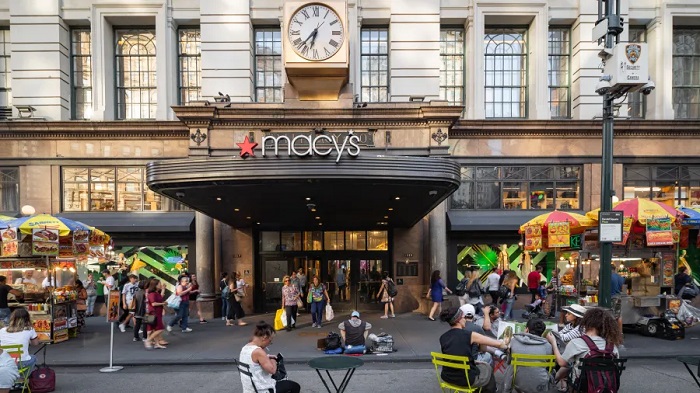Business
The Evolution of Malls: What Macy’s Store Closures Mean

- Macy’s plans to close 150 stores by 2027, shifting focus to smaller formats and digital strategies.
- Shopping malls are pivoting towards experiential retail, integrating activities and services beyond traditional shopping.
- Malls are being reimagined as multi-purpose community hubs, blending retail with dining, entertainment, and lifestyle amenities.
The American retail mall is undergoing a major shift, owing partly to Macy’s recent intention to close 150 locations by 2027. These closures are part of the retailer’s larger plan of shifting attention to more efficient, smaller layouts, and digital experiences. As traditional retail areas decrease, the future of mall’s is set to change, with experiential retail playing a critical part in reshaping how customers interact with these locations.
Macy’s Change in Strategy: A New Era in Retail
Macy’s has long been a staple of the American mall experience, but the retail industry’s difficulties, such as changed consumer patterns and rising competition from e-commerce, have forced the company to adapt. By shutting underperforming stores, Macy’s hopes to streamline operations and invest in more profitable opportunities. This shift mirrors a larger trend among merchants who are reconsidering the classic department store model in favor of more adaptable and innovative alternatives.
CEO Jeff Gennette has stressed Macy’s commitment to embracing digital innovation and improving the consumer experience. As Macy’s reduces its physical base, the firm is focusing on growing its online presence, improving fulfillment capabilities, and fine-tuning its omnichannel initiatives.
The Impact On Shopping Malls: A Shift Toward Experiential Retail
The shutdown of Macy’s stores marks a big shift for shopping centers nationwide. Malls, which were once reliant on huge anchor stores such as Macy’s to drive foot traffic, must now reinvent themselves to remain relevant in today’s retail scene. Many are turning to experiential shopping, which focuses on providing buyers with unique, engaging experiences.
Experiential retail combines activities, entertainment, and services that go beyond regular shopping. This can range from pop-up events and immersive brand activations to eating and entertainment offerings that entice visitors looking for more than simply a shopping experience. The idea is to establish a destination where shopping is only one aspect of the whole experience, resulting in longer trips and repeat customers.
A New Function for Malls in the Community
As Macy’s stores disappear, malls are seeking to recast themselves as community engagement hubs. Developers are looking for new ways to add lifestyle facilities like fitness centers, co-working spaces, and even residential units. The transition is turning malls into multi-purpose destinations that serve not only as shopping hubs, but also as locations where people can work, live, and play.
This reinvention of the mall experience has already begun in several cities across the United States. Malls’ offers are getting more broad, with a mix of retail, dining, and entertainment alternatives alongside fitness studios, wellness facilities, and cultural events. Malls hope to attract a wider audience and create an environment that appeals to a variety of demographics by focusing on these diversified products.
Opportunities for Retailers and Brands
Mall transformations provide merchants and brands with a unique opportunity to connect with customers in new and inventive ways. The emphasis on experiential retail enables firms to engage with customers in more meaningful ways, giving them experiences that go beyond the typical shopping excursion. This tendency is particularly appealing to younger generations, who value experiences over material possessions and seek for destinations that provide more than simply items.
Retailers who embrace this trend will benefit from improved brand loyalty and customer involvement. Brands may establish deeper ties and long-term relationships with their customers by providing settings that include commerce, social engagement, and entertainment.
Looking Ahead: The Future of Malls and Retail
The closure of 150 Macy’s stores signals a watershed moment in the American mall experience, but it also provides an opportunity for reinvention. Malls are no longer merely places to shop; they are dynamic destinations where customers can explore, mingle, and participate in one-of-a-kind activities.
The future of retail lies in building locations that are adaptive, experiential, and tailored to the needs of the modern customer. Malls, with the appropriate mix of innovation and creativity, have the ability to prosper in this new era of retail, ensuring their relevance for many years. Macy’s courageous decision to rethink its approach is just one example of how the industry is changing, and it’s evident that the mall of the future will be significantly different from the one we know today.


















































